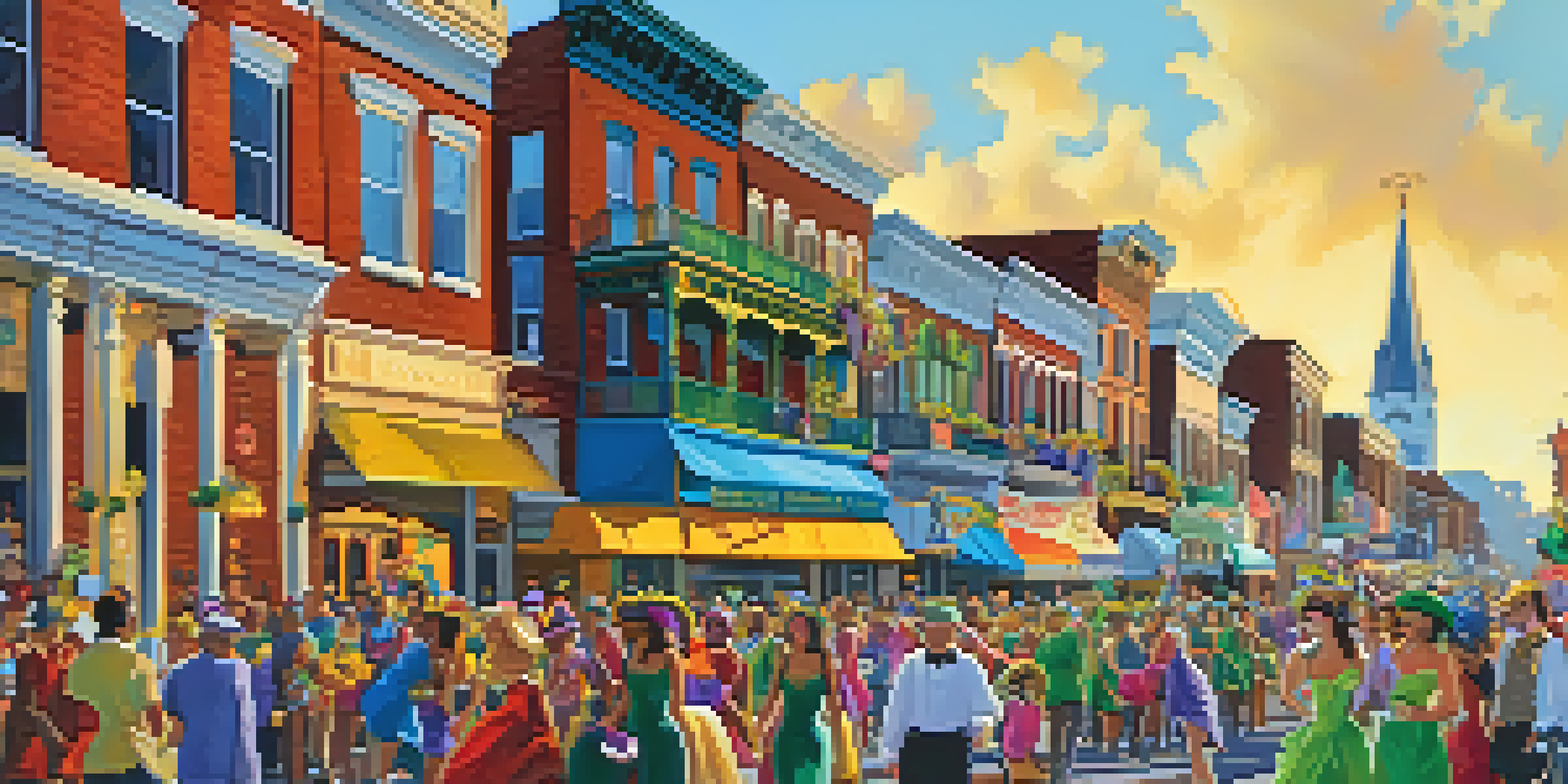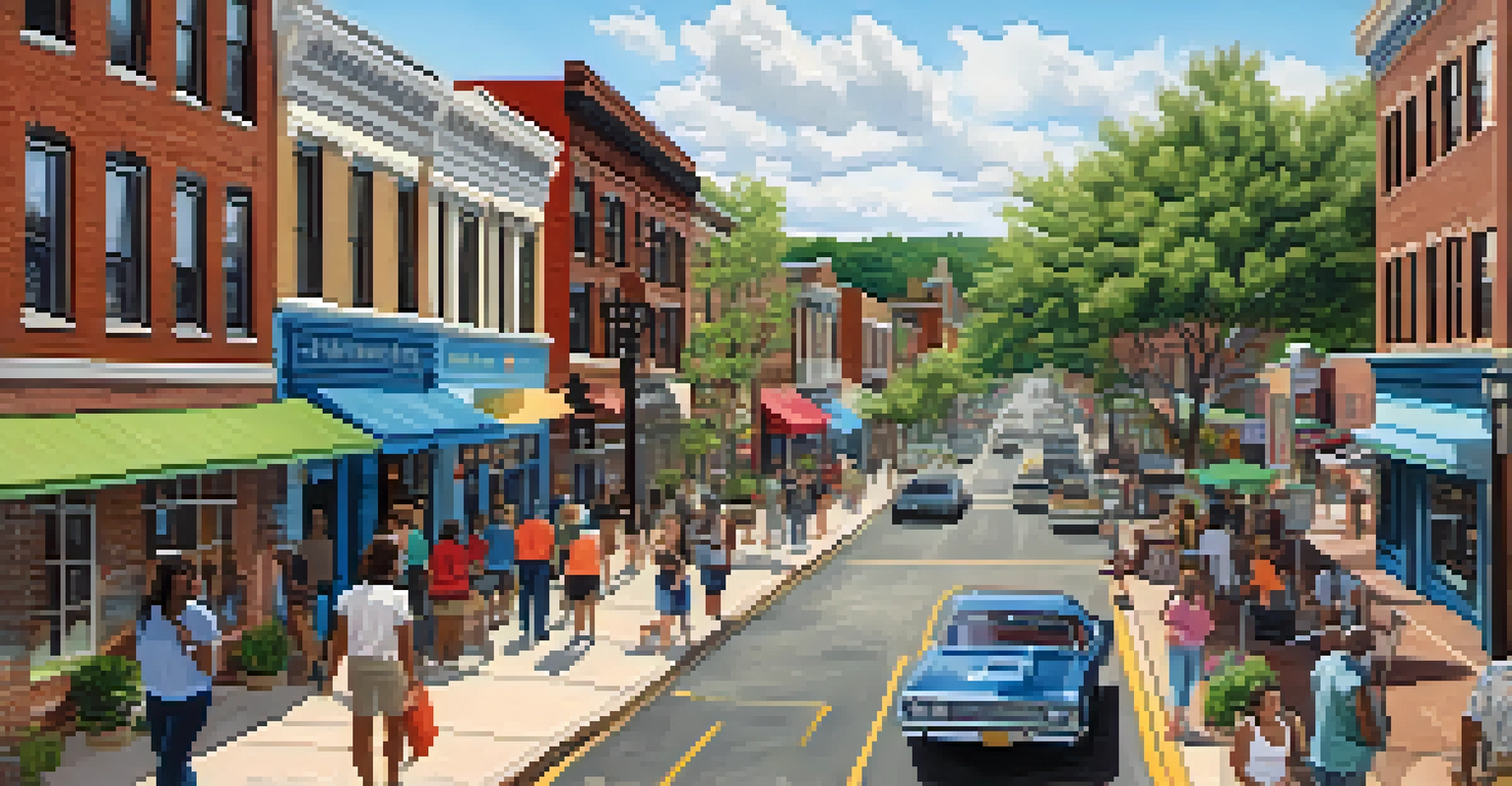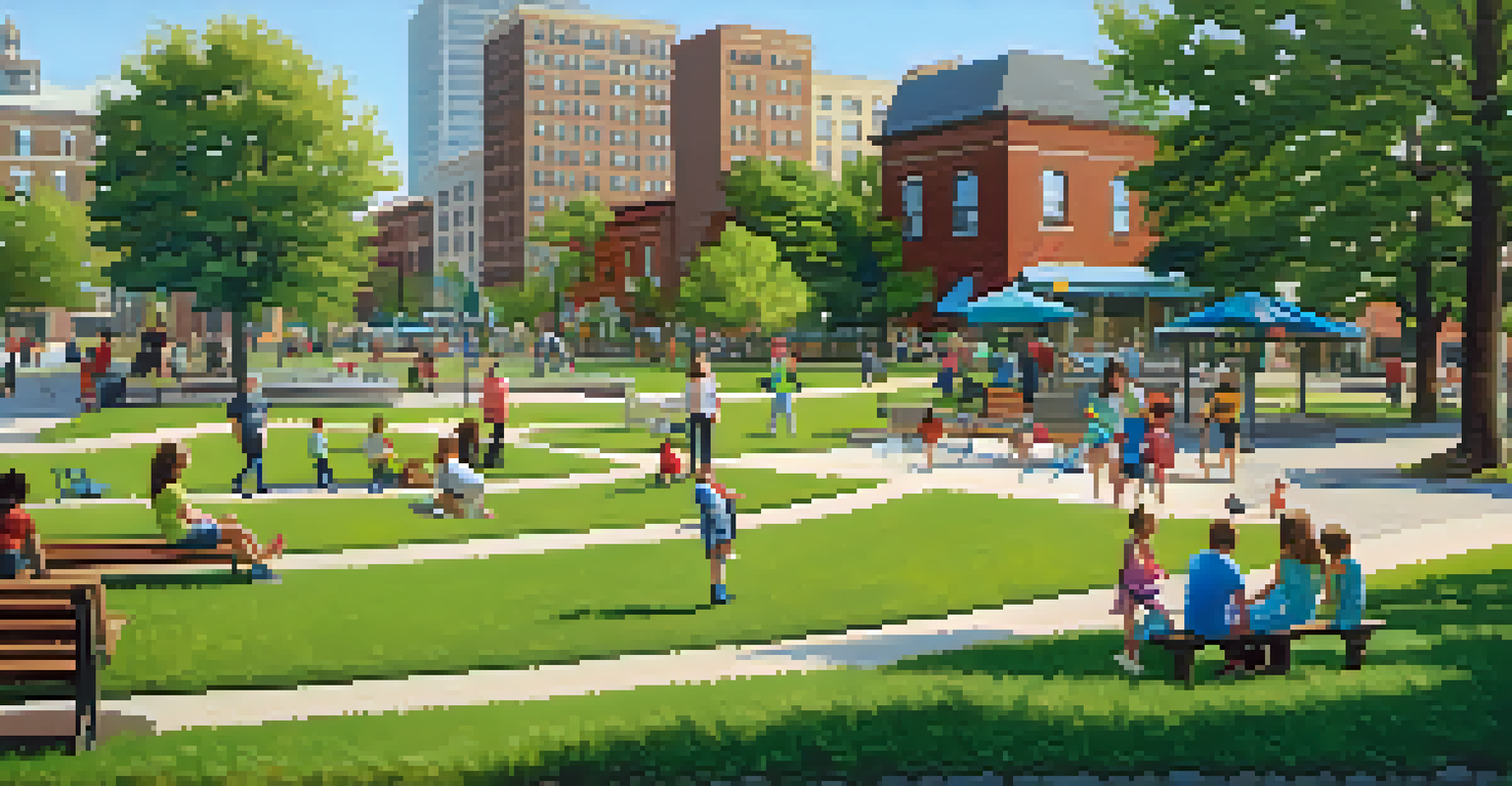Historical Roots of St. Louis Neighborhoods and Communities

The Founding of St. Louis: A Cultural Melting Pot
St. Louis was founded in 1764 by French fur traders, Pierre Laclède and Auguste Chouteau. This early settlement was strategically located along the Mississippi River, which made it an essential hub for trade and commerce. The city's French influence is still evident today in its architecture and street names, reflecting a rich cultural heritage that laid the groundwork for its diverse neighborhoods.
St. Louis is a city of stories, where the past and present intertwine to create a unique cultural identity.
As the city grew, waves of immigrants from various countries began to settle here, each group contributing to the local culture. Germans, Italians, and Irish were just a few of the communities that arrived in the 19th century, bringing their customs, cuisines, and traditions. This influx not only enriched the city's cultural landscape but also helped shape the distinct character of its neighborhoods.
Consequently, St. Louis became a vibrant tapestry of cultures, where different traditions coexisted and influenced one another. This blend of cultures can be seen in neighborhoods like The Hill, known for its Italian roots, and Soulard, famous for its German heritage. The city's founding and subsequent growth set the stage for the diverse communities we see today.
The Role of Industry in Shaping Neighborhoods
The industrial boom in the late 19th and early 20th centuries significantly impacted the geography and demographics of St. Louis. Factories, breweries, and warehouses sprang up, attracting workers from rural areas and other cities. This surge of employment opportunities led to the rapid expansion of neighborhoods, transforming the city's landscape and community dynamics.

As industries flourished, neighborhoods began to take on distinct identities based on the types of work available. For example, the presence of breweries in the Soulard area fostered a vibrant German-American community. Meanwhile, areas near the river became hubs for shipping and trade, attracting a diverse workforce and creating a melting pot of cultures.
Cultural Diversity Shapes St. Louis
St. Louis's neighborhoods reflect a rich tapestry of cultural influences from early French settlers to waves of immigrants, creating a unique cultural identity.
These industrial roots not only shaped the city's economy but also influenced social interactions and community development. The growth of labor unions and cultural organizations arose out of this industrial backdrop, fostering a sense of belonging among residents. Thus, industry played a crucial role in defining the neighborhoods of St. Louis and their unique characteristics.
The Impact of the Great Migration
The Great Migration, which saw millions of African Americans move from the rural South to Northern cities, had a profound effect on St. Louis's neighborhoods. Between 1910 and 1970, many settled in the city, seeking better economic opportunities and escaping racial discrimination. This migration transformed the cultural fabric of St. Louis, leading to the establishment of vibrant African American communities.
Revitalization is not just about buildings; it’s about people and communities reclaiming their narratives.
Neighborhoods like the historic Ville became centers for African American culture, hosting jazz clubs, theaters, and businesses that catered to the community. The arts flourished during this period, with St. Louis becoming a hotspot for jazz and blues music, which now forms an integral part of the city's identity. This cultural explosion not only enriched the local scene but also attracted visitors from far and wide.
However, this migration also brought challenges, including racial tensions and segregation. As African Americans settled in specific neighborhoods, they often faced discrimination and unequal access to resources. Despite these obstacles, the resilience of these communities led to the establishment of powerful social networks and organizations, which continue to play a vital role in St. Louis's history.
Post-War Changes and Urban Renewal
After World War II, St. Louis experienced significant changes as urban renewal projects reshaped the city. The government aimed to modernize infrastructure and revitalize neighborhoods, but these efforts often came at a cost. Many historic buildings were demolished, and communities were displaced, leading to a loss of cultural heritage and social networks.
In the quest for progress, neighborhoods like Old North St. Louis faced challenges as homes were razed to make way for new developments. While some areas saw improvements, the displacement of long-time residents created rifts and a sense of loss. This period highlighted the delicate balance between modernization and preserving the unique character of communities.
Industry Influences Neighborhoods
The industrial boom in the late 19th and early 20th centuries transformed the geography and community dynamics of St. Louis, defining the character of its neighborhoods.
Despite the setbacks, many neighborhoods began to rebuild and reclaim their identities through grassroots efforts. Community organizations emerged to advocate for residents' rights, emphasizing the importance of preserving local culture and history. This resilience paved the way for revitalization efforts that honored the past while embracing the future.
Cultural Festivals and Community Celebrations
St. Louis is renowned for its lively cultural festivals, which reflect the city's diverse neighborhoods and communities. Events like the St. Louis Mardi Gras, held in Soulard, celebrate the city's rich heritage with parades, music, and delicious food. Similarly, the festival in The Hill showcases Italian culture with authentic cuisine and lively entertainment.
These celebrations not only bring people together but also serve as a reminder of the unique histories that shape each community. They offer a platform for residents to share their traditions and connect with others, fostering a sense of pride and belonging. Moreover, these events attract visitors, contributing to the local economy and promoting tourism.
In essence, cultural festivals play a vital role in preserving and sharing the historical roots of St. Louis neighborhoods. They encourage inter-community engagement, allowing different cultures to come together in celebration. As the city continues to evolve, these festivities remain a cherished link to the past and a bright spot for the future.
Revitalization Efforts in St. Louis Neighborhoods
In recent years, St. Louis has seen a resurgence in revitalization efforts aimed at breathing new life into its neighborhoods. Community leaders and organizations are working together to restore historic buildings and promote local businesses. These initiatives not only enhance the physical landscape but also aim to strengthen community bonds and create spaces for residents to gather.
Neighborhoods like Cherokee Street have blossomed into vibrant cultural districts, attracting artists, entrepreneurs, and families alike. This transformation has rejuvenated the area, fostering a sense of pride and ownership among residents. Efforts to support local businesses and create public spaces have also encouraged community involvement and collaboration.
Revitalization Balances Past and Future
Current revitalization efforts in St. Louis aim to restore neighborhoods while addressing challenges like gentrification, ensuring community voices are heard.
However, revitalization comes with its own set of challenges, including concerns about gentrification and the displacement of long-time residents. Balancing development with the needs of existing communities is crucial to ensuring that all voices are heard. By engaging residents in the revitalization process, St. Louis neighborhoods can continue to honor their historical roots while adapting to contemporary needs.
The Future of St. Louis Neighborhoods
As we look to the future, the neighborhoods of St. Louis stand at a crossroads. The city's rich history provides a strong foundation for growth and development, but it also poses challenges in terms of preserving cultural identity. The ongoing dialogue between residents, city planners, and community organizations will be essential in shaping the future of these communities.
With increasing interest in urban living and sustainability, St. Louis neighborhoods have the potential to become vibrant hubs that reflect the diversity of their residents. Initiatives focused on green spaces, affordable housing, and local businesses will play a critical role in fostering inclusive communities. Emphasizing community engagement will help ensure that the evolution of these neighborhoods honors their historical roots.

Ultimately, the future of St. Louis neighborhoods lies in their ability to adapt while cherishing their past. By embracing their unique stories and collective heritage, these communities can continue to thrive, offering a rich tapestry of culture, history, and connection for generations to come.